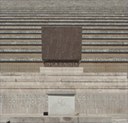0164 Italienische Kriegsgräberstätten im Alpenraum als Mittel faschistischer Propaganda
Identifiers (Article)
Identifiers (Files)
Abstract
For the self-perception of the Kingdom of Italy, founded as late as 1861, the soldiers killed in action during WW I played a particular role. The war memorials built for them along the front between the Stelvio Pass and the Isonzo River, the frontier to the former Austro-Hungarian Empire, are a case in point. After their seizure of power in 1922, the Italian fascists radically converted the memorial culture from the mourning of the dead to their celebration as fascist martyrs. New war memorials were built, now rather driven by the ideas of heroism and sacrifice for the nation – and for future wars. These new war memorials were also erected in regions where no fighting had taken place during WW I, as in South Tyrol, at the Brenner or the Reschen Pass. This was a clear indication of their function as an instrument for political propaganda.
Statistics


License

This work is licensed under a Creative Commons Attribution-NonCommercial-NoDerivatives 4.0 International License.



